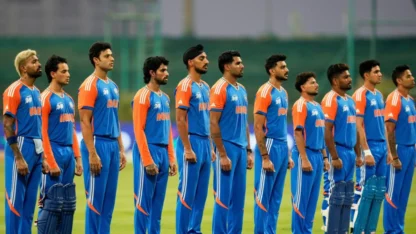It was close to six-seven years back when former India coach, Malaysian Tan Kim Her laid the foundations of changing the doubles ecosystem in India. He brought a program in place, identified the future teams, trained them all, and most importantly, brought Satwiksairaj Rankireddy & Chirag Shetty together.
Till 2019, he nurtured the duo, and other teams from back then — Ashwini Ponnappa/Sikki Reddy, Praanav Jerry Chopra/Sikki, and Satwik/Ashwini, that perhaps started the country’s rising stock in the doubles.
The situation now is a little different for Team India, as well as coach Tan. Satwik/Chirag are the best in the world currently, while new ones like Treesa Jolly/Gayatri Gopichand and Ashwini Ponnappa & Tanisha Crasto have come up. As for Tan, he has moved to Japan, taking care of the doubles setup there. Despite moving, he has a close watch on the Indian doubles specialists, and of course has a lot of insights on their games too.
The 52-year-old Malaysian, as expected, sung paeans to Satwik-Chirag, but also cautioned India to develop other teams soon. Tan, in an interaction with InsideSport, sounded a little worried, still, at the lack of quality teams coming out from India.
What About the Others?
“First things first, Satwik-Chirag have really arrived in the last couple of years. Now you can actually see a lot of planning in their games, that they have developed over the years. It feels great that my efforts paid-off, for all the hard work that I had done in those years,” Tan said during the India Open 2024.
“I see Satwik/Chirag making some sort of progress time-to-time, but the others also really need to step up now. Indian teams need to start coming out good. They have some good teams in Ashwini/Tanisha, and Gayattri/Treesa, so just make it count. India need to have back ups in every category. Who after Satwik/Chirag,” he added.
Back when Tan was around, his foremost task was to ensure, that he gives a pair that really makes it big, but now, how the others will grow from their existing level, has become a bit of an headache. Treesa/Gayatri made two All England semis back to back, but haven’t yet announced themselves on the circuit by winning tournaments. Ashwini/Tanisha, on the other hand, are still finding their ground on the tour, as they started to team up only a year back.

Other Indian Teams Need More Attention
Men’s doubles has Dhruv Kapila/MR Arjun, who have struggled with injuries over the past year, and their ranking has dropped significantly. To add to that, there’s no prominent pair in mixed doubles, who seem to be making it big. As a whole, the Indian doubles still needs a lot of work, undoubtedly.
“Satwik/ Chirag. you can see are doing good. Now I can see a few other good pairs as well. but they have to go another level up. How, and when, their coaches need to figure. I feel they need a special program in order for them to make to the high top level.”
For the moment, Danish legend Mathias Boe is in charge of the doubles team, but the management needs to ask itself, if it’s enough, and if the other teams need more attention. “As an outsider, I can only talk on assumptions. And it seems like, other teams need more management. Boe is there now, which is great, but find out ways to take care of your doubles,” the coach added. “You cannot leave a big gap after Satwik/Chirag.
Japanese Pairs Might Have Their Own Sets of Problems
Takuro Hoki/Yugo Kobayashi in men’s doubles, Nami Matsuyama/Chiharu Shida, Yuki Fukishima/Sayaka Hirota, Mayu Matsumoto/Wakana Naghara in women;s doubles, and Yuta Watanbe/Arisa Higashino in the mixed, are in line to make it to the Paris 2024 Olympics. But as every careful coach, Tan underplayed the Japanese doubles might. He also shed light on a slight issue, that he faces while training them; it’s something other than the language barrier.
“Difficult part is, the Japanese players head back to their respective clubs after a tournament or two. I can’t keep a tab on what they’re doing there, and I only meet them before the tournaments. So we get limited training time. Every country has a different training system. And Japan has one totally different to India. And it just works fine for them I guess. Rest we’ll see how the results are in the next few months for them.”
Lastly, Tan did not shy away from rating Satwik/Chirag, from an opposition coach’s point-of-view. “Earlier they used to nervous when they stepped on the court, but now the tables have turned. We always discuss at length, how to tackle them,” he concluded.
Editor's Pick
 Cricket
IND vs SA 4th T20I comes to a shameful end as smog & pollution win in Lucknow
Cricket
IND vs SA 4th T20I comes to a shameful end as smog & pollution win in Lucknow






















































